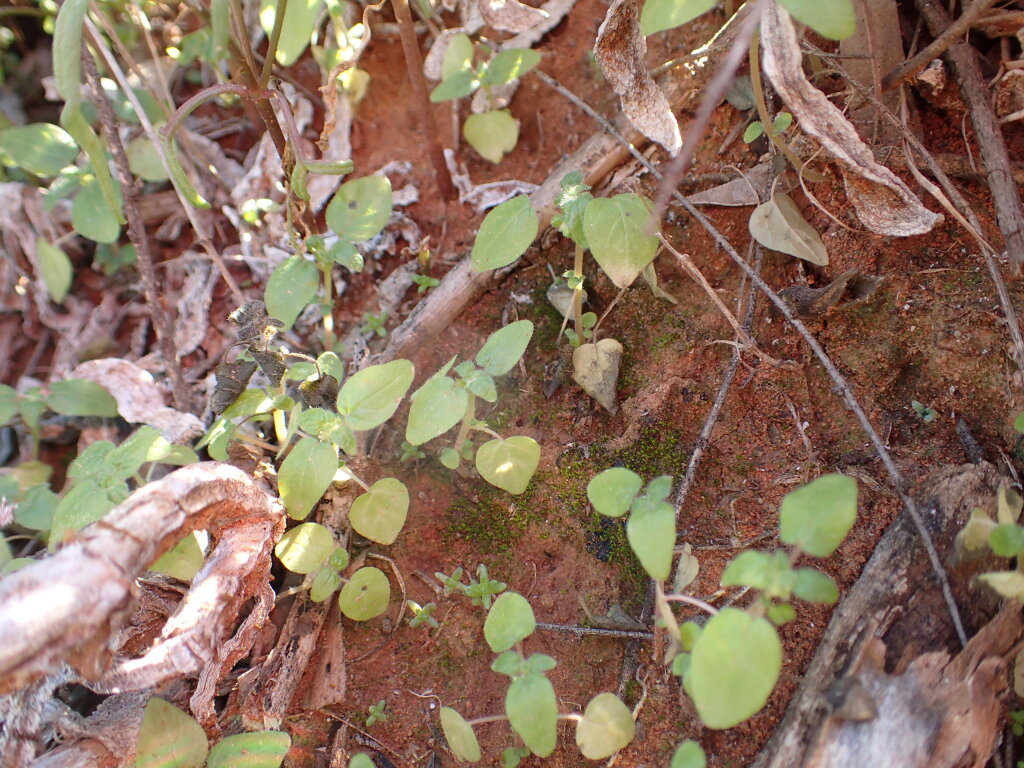Parietaria cardiostegia
GreuterAnnual herb, 5–60 cm high, not woody at base; stems usually erect, not rooting at the nodes, brown to red, densely covered in curved hairs and scattered glandular and flexuose hairs. Leaf-lamina narrowly ovate to ovate, 1–3 cm long, 4–21 mm wide, 3-nerved; base truncate or broadly cuneate or subcordate; apex broadly acuminate or blunt. Inflorescence a 3-flowered cyme; central flower bisexual, supported by 1 sessile, small, non-reticulate bract; lateral flowers female, subtending bracts 3, free, heart-shaped, hiding lateral flowers, becoming brown and hard at maturity, reticulate venation raised and reddish-brown; perianth of all flowers similar, c. 2 mm long, midvein distinct and reddish-brown; stigma sessile. Achene c. 1.2 mm long, c. 0.8 mm wide, middle brown, sometimes crushed; apiculum terminal. Flowers Sep.
LoM, MuM, CVU. Also WA, NT, SA, NSW. Rare plant of in the far northwest of the State, growing in shaded habitats in shallow sandy soil. A mixed collection (with P. debilis) in MEL labelled 'Warburton' is presumably in error.
Gebauer, R. (1996). Parietaria. In: Walsh, N.G.; Entwisle, T.J., Flora of Victoria Vol. 3, Dicotyledons Winteraceae to Myrtaceae, pp. 87–89. Inkata Press, Melbourne.
 Spinning
Spinning



